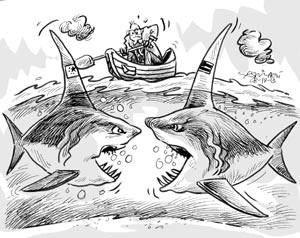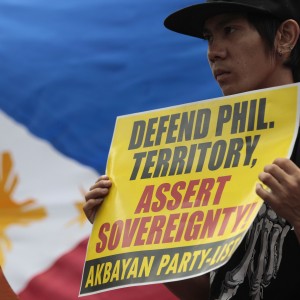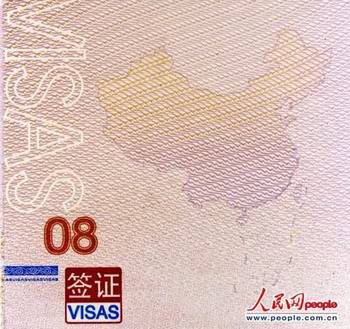by Admin | Jun 9, 2014 | News
(BGF) – In a response to China’s controversial claims over Paracel and Spratly Islands, Thang Tran, President of The Institute for Vietnamese Culture & Education (U.S) announced that he has a collection of 150 maps that were published in England, America, France, Germany, Scotland, etc. for 400 year during 1626- 2008, in which shows that the Paracel Islands belong to Vietnam.

Mr Tran said the map dimensions vary from 8” x 10” (20cm x 25cm) to 24” x 30” (60cm x 75cm). In the collection, 80 maps indicate that south of China is Hainan Island and 50 maps show that the Paracel Islands belong to Vietnam.
He shared on his websites that he found two atlases of the Republic of China published by the Republic of China’s Ministry of Transportation in 1919 & 1933 and one Atlas of The Chinese Empire published by the China Inland Mission in 1908. The atlas edition in 1908 contains 23 maps; the atlas edition in 1919 contains 49 maps; the atlas edition in 1933 contains 29 maps. The dimensions of the atlas edition in 1919 & 1933 books are 62cm x 38cm x 4cm. All three books do not list the Paracel and Spratly Islands on the map and index page.
Recently, China established a local government and military base on Woody Island, part of the Spratly Islands. Vietnam claims its sovereignty over the Woody Islands.
He donated his entire map collection to the Da Nang Institute for Socio-Economic Development for their research on the Paracel and Spratly Islands.
by Admin | Jun 9, 2014 | News
(BGF) – In a move to defend its territory against China, the Philippines administration had an agreement that will allow more US troops to rotate through Philippine military bases, the Philippine’s Manila Standard Today News reported on August 14. As the Foreign Affairs Secretary Albert del Rosario said, this action is to “defend what is ours, to secure our nation and to keep our people safe”.
Will this be a smart move?
Click here to read the full article or visit the Manila Standard Today website.
Dangerous waters
August 14, 2013
(MST News) – WHAT is the administration’s game plan as it heads into talks with the Americans to hammer out a new agreement that will allow more US troops to rotate through Philippine military bases?
 (Photo Credit: The Manila Standard Today News)
(Photo Credit: The Manila Standard Today News)
The immediate goal, Foreign Affairs officials say, is to bring about an increase in the American presence here amid China’s growing aggressiveness in staking its claim to portions of the South China Sea that rightly belong to us.
“Our region needs to know that we are steadfastly for peace, but that we stand ready to tap every resource, to call on every alliance, to do what is necessary, to defend what is ours, to secure our nation and to keep our people safe,” said Foreign Affairs Secretary Albert del Rosario.
The larger American presence in the Philippines, Del Rosario added, would serve as an added deterrent against foreign intrusions into the country’s territorial waters while the ill-equipped Armed Forces tries to modernize.
Click here to continue reading
by Admin | Jun 9, 2014 | News
(BGF) – China had clarified its controversial laws over Hainan and the South China Sea recently in order to calm regional tensions . However, the analysts still said China has acted on its own in drawing up its new rules and this is one of actors to push ahead with China’s claims over South China Sea, the Iran’s Press TV reported on Dec 31.
Click here to read the full article or visit the Press TV website.
China explains new controversial laws over South China Sea
December 31, 2012 | by Steven Ribet in Beijing
( Press TV) – In Beijing, the Chinese government has moved to calm regional tensions by clarifying a series of controversial rules that had stoked fears over possible clashes in the South China Sea. The rules had been announced without detail by the government of the southern island province of Hainan at the end of November. Some analysts took them to mean that from January 1, Chinese police would have the right to board and seize foreign vessels anywhere in the South China Sea. But China’s Foreign Ministry spokeswoman says enforcement would be limited to 12 nautical miles off Hainan’s coast.
Hua also repeated her government’s stance that negotiation is the best way of resolving territorial disputes between China and its neighbors.
The South China Sea is rich in fish and oil and gas resources and straddles some of the world’s most important shipping lanes. China’s moves to enforce its claim to nearly the entire body of water have recently brought about confrontations with Vietnam and the Philippines, which also lay claim to islands in the sea.
In China’s government structure, Hainan has jurisdiction over the South China Sea and some analysts say it acted on its own initiative in drawing up its new rules. The province is just one of many state actors pushing ahead with China’s claims over South China Sea. Other actor include the coastguard and even state energy companies. The Foreign Ministry, which is much less powerful in China than in other countries, doesn’t have the authority to co-ordinate them.
Last week China allocated funds for building infrastructure on the Paracel islands. Last July, Beijing also it established its administrative capital for the South China Sea, Sansha, and a military garrison there. And two days later it announced it is deploying a new class of patrol vessel; the first to be equipped with a helicopter pad.
by Admin | Jun 9, 2014 | News
(BGF) – Foreign Affairs Secretary Albert del Rosario spoke in the Association of Southeast Asian Nations’ foreign ministers meeting in Bandar Seri Begawan, that “the Philippines shall always adhere to the peaceful settlements of disputes through lawful, non-coercive and transparent means that promote the healthy functioning of an equitable and rules-based international system”, as Jerry reported to the Philippine Daily Inquirer.
The Department of Foreign Affairs head also emphasized the desire to have a legally binding Code of Conduct in the South China Sea between ASEAN and China.
Click here to read the full story or visit the Daily Inquirer website.
PH to stick with arbitration under UNCLOS to pursue Spratly claims
April 12, 2013| By Jerry E. Esplanada
MANILA, Philippines — The Philippines reiterated, on Thursday, its commitment to the peaceful settlement of its claims in the West Philippine Sea or the South China Sea area through arbitration proceedings under the 1982 United Nations Convention on the Law of the Sea, or UNCLOS.
Speaking before the Association of Southeast Asian Nations’ foreign ministers meeting in Bandar Seri Begawan, Foreign Affairs Secretary Albert del Rosario emphasized on Thursday, that “the Philippines’ recourse to arbitration is firmly rooted in the tradition of good global citizenship.”
“The Philippines shall always adhere to the peaceful settlements of disputes through lawful, non-coercive and transparent means that promote the healthy functioning of an equitable and rules-based international system,” said the Department of Foreign Affairs head.
Del Rosario asserted that Manila’s arbitration initiative, “when objectively considered, will benefit all parties.”
“For the Philippines, it will clearly define what is legitimately ours, specifically maritime entitlements under the UNCLOS with regards to our fishing rights to resources and our right to enforce our laws within our Exclusive Economic Zone (EEZ),” he said.
For China, “an arbitration award will finally clarify its lawful maritime entitlements in the South China Sea,” he pointed out.
“This will enable China to provide responsible leadership towards fostering stability in the region,” according to Del Rosario.
At the same time, he reiterated that “the Philippines’ desire to have a legally binding Code of Conduct in the South China Sea has not changed.”
Click here to continue reading.
by Admin | Jun 9, 2014 | News
(BGF) – Li Jieyu, a research fellow in international relations at at Hainan Provincial Party School pointed out in the Global Times that the Philippines’ file against China’s territorial claims over the South China Sea is an violation of the stipulations of the UN Convention on the Law of the Sea (UNCLOS), and China isn’t fearful of the suit.
Click here to read full story or visit the Global times website.
No legal basis for Philippine maritime suit
March 25, 2013 | By Li Jieyu
he Philippines recently filed a complaint against China over the South China Sea disputes in the UN International Tribunal for the Law of the Sea (ITLOS).
China isn’t fearful of the suit. The action of the Philippines violated the stipulations of the UN Convention on the Law of the Sea (UNCLOS).
In line with UNCLOS, before the maritime boundary delimitation dispute is resolved, the disputants should lay out transitional agreement, and avoid taking unilateral actions that prejudice the settlement.
China and the ASEAN claimants in the South China Sea disputes once agreed to shelve the disputes and develop the resources jointly.
In March, 2011, Philippine President Benigno Aquino III expressed a desire to exploit the resources in Reed Tablemount, known as Liyue Tan in China, together with other claimants. However, Secretary of Foreign Affairs Albert del Rosario rejected the statement in February 2012 and excluded the possibility of joint exploitation of Reed Tablemount, which is an integral part of the Nansha Islands.
Regarding the Huangyan Island incident in April 2012, the Philippines sent a warship to arrest Chinese fishermen anchored in the lagoon of the island. The island is China’s territory in accordance with UNCLOS. The adjacent 12 nautical mile-wide waters, therefore, is its territorial sea, where China has the legal right to implement domestic laws and regulations.
The Philippines without any doubt violated the convention in terms of innocent passage and should be driven out immediately due to the law on the territorial sea of China.
Click here to continue reading.
by Admin | Jun 8, 2014 | News
(BGF) – Vietnam, the Philippines, India, and even Taipei reacted with unusual fury over the new design of the Chinese passport, The Diplomat reported. The new Chinese passport eatures watermarks that include 90 percent of the South China Sea, Arunachal Pradesh and Aksai Chin, as well as famous tourist attractions in Taiwan.
Click here to read the full article or visit The Diplomat website.
China’s New Passport Sparks Controversy
Nov 27, 2012 | by J. Michael Cole
(The Diplomat) – China’s refashioned passport feature watermarks to some hotly disputed territories.
 (Photo credit: Wikicommons)
(Photo credit: Wikicommons)
Several Asian countries last week reacted with unusual fury over the new design of the Chinese passport, which features watermarks that include 90 percent of the South China Sea, Arunachal Pradesh and Aksai Chin, as well as famous tourist attractions in Taiwan. Although Beijing’s move was mostly symbolic, it constitutes yet another escalatory step in China’s many territorial disputes and could, depending on how other countries respond, make already complex issues even more difficult to resolve.
So far, the reactions to the new passport have been uniformly negative, with Hanoi and Manila issuing official protests over the inclusion of the so-called nine-dash lines in the South China Sea and island groups such as the Paracels and Spratlys. Vietnam’s Foreign Ministry went as far as to request that Beijing remove the “wrong” content from the passport, and Hanoi is now reportedly refusing to stamp the passport, and will instead stamp a separate piece of paper.
Even Taipei, the current government of which has engaged in a multifaceted effort to improve relations with China, called the passport “unacceptable” and warned it could negatively impact upon the ongoing rapprochement (under the Republic of China constitution, Taiwan’s sovereignty claims within the region are almost exactly like China’s). Aside from including areas claimed by the ROC, the new passport shows Sun Moon Lake in central Taiwan’s Nantou, and Chingshui Cliffs in Hualien, both top tourist spots and symbols of Taiwan’s natural beauty.
India, whose Ministry of External Affairs called the inclusion of Arunachal Pradesh, which borders China-controlled Tibet, and Aksai Chin in Kashmir, “unacceptable,” quickly responded by issuing visas to Chinese citizens with a map clearly showing the two disputed areas as part of India’s territory.
Click here to continue reading.
by Admin | Jun 9, 2014 | News
(BGF) – The Philippine Daily Inquirer reported the crowd of about 500 people protested against China’s claims to much of the South China Sea in front of the Chinese consulate in Manila. A small group of Vietnamese also joined the protest, waving anti- China banners, as a support to the Philippines in the struggle against an aggressive China. The protest also attracted participation of the Philippine former government and army officials.
Click here to read the full story or visit the Inquirer website.
Filipinos, Vietnamese protest China’s territorial claims
July 24, 2013

A Fililipino protester holds a slogan beside a Philippine flag during a rally outside the Chinese Consulate in suburban Makati, south of Manila, Philippines on Tuesday June 11, 2013. The group held the rally to oppose China’s alleged continued intrusion and poaching activities in the West Philippine Sea. (Photo Credit: Associated Press)
MANILA, Philippines — Hundreds of people in the Philippine capital protested Wednesday against China’s claims to much of the vast South China Sea, saying Beijing’s intrusions into other countries’ territories would tarnish its image as it becomes a world power.
Waving Philippine flags and blowing horns, the protesters massed in front of a building housing the Chinese consulate in Manila, blocking noontime traffic. The Chinese consulate closed its visa office due to the protest.
Anti-riot police closely watched the crowd of about 500, which sang nationalist songs, yelled anti-China slogans and held up placards that read: “China stop bullying” and “China get out of the West Philippine Sea.”
The West Philippine Sea is a new name the Philippine government has adopted for the disputed body of water that has been the site of recent confrontations involving Chinese military and civilian surveillance ships and those from the Philippines and Vietnam.
Six governments — China, the Philippines, Vietnam, Brunei, Malaysia and Taiwan — lay claim to disputed territories in the sea, which is home to busy shipping lanes and is potentially rich in oil and gas deposits. Many fear the disputes could eventually spark Asia’s next major armed conflict.
Click here to continue reading.
by Admin | Jun 7, 2014 | News
(BGF) – In a website, Vietnam has proved its claim over Spratly and Paracel Islands by stating historical, legal documents along with principles of international law and internal practices. In this report, Vietnam has historical sovereignty over the disputed waters.
Click here to read the full report or visit the website.
VIETNAM CONTINUOUSLY EXERCISES ITS SOVEREIGNTY OVER HOANG SA, TRUONG SA ARCHIPELAGOS
August 9, 2012
The Hoang Sa (Paracel) and the Truong Sa (Spratly) are the two archipelagoes to the East of the Vietnamese coast in the East Sea. The closest point of the Hoang Sa is about 170 nautical miles from the central city of Da Nang and about 120 nautical miles from the Re island, a near-shore island of Vietnam. While, the Truong Sa is about 250 nautical miles from the Cam Ranh Bay, Nha Trang city, Khanh Hoa province, at its closest point.
In the past, with sketchy information about the Hoang Sa and the Truong Sa archipelagos, navigators knew little about a large area of submerged reefs very dangerous for boats. Ancient Vietnamese documents indicated this area with various names, including “Bai Cat Vang” (Golden Sandbank), “Hoang Sa” (Golden Sand), “Van Ly Hoang Sa” (Ten-Thousand-Mile Golden Sand), “Truong Sa” (Long Sand) or “Van Ly Truong Sa” (Ten-Thousand-Mile Long Sand). Most of the maps drawn by Western navigators from the 16th to the 18th centuries marked the Hoang Sa and Truong Sa archipelagoes under one single name: Pracel, Parcel, or Paracels. All of the above-mentioned maps generally located Pracel (including both the Hoang Sa and the Truong Sa) as an area in the East Sea, east of Vietnam, off Vietnamese near-shore islands. Later, thanks to progress in navigation science, the Hoang Sa archipelagoes and the Truong Sa archipelagoes were clearly defined.
The two archipelagos identified as the Paracels and the Spratley or Spratly in present-day international maritime maps are precisely the two Vietnamese archipelagoes of “Hoang Sa” and “Truong Sa”. The appellations of Xisha and Nansha were given by China several decades ago to make claims to sovereignty over these islands. Long ago, the Vietnamese people discovered the Hoang Sa and Truong Sa archipelagoes. The Vietnamese state had occupied and exercised its sovereignty over the two archipelagoes in an actual, continuous and peaceful manner.
Click here to continue reading.
by Admin | Jun 7, 2014 | News
(BGF) – China took a new action to further claim its sovereignty over the South China Sea by printing a map including the disputed territories inside its new Chinese passports. This has infuriated Vietnam and the Philippines as China is forcing its neighbor immigration officials and citizens to implicitly recognize Chinese claims over the South China Sea every time a Chinese citizen is given a visa or an entry or exit stamp in one of the new paspports.
The Financial Times made a report on this issue. Click here to read the full article or visit its website.
China stamps passports with sea claims
Nov 21, 2012 | By Jamil Anderlini in Beijing and Ben Bland in Phnom Penh
 (Photo Credit by People’s Daily)
(Photo Credit by People’s Daily)
“It’s one very poisonous step by Beijing among their thousands of malevolent actions” — Nguyen Quang A
Beijing has included its South China Sea territorial claims on maps printed inside new Chinese passports, infuriating at least one of its neighbours.
Vietnam has made a formal complaint to Beijing about the new passports.
“The Vietnamese side has taken note of this matter and the two sides are discussing it, but so far there has been no result,” said Vietnam’s embassy in Beijing.
Other countries that have clashed with China over its assertions in the South China Sea, in particular the Philippines, are also worried China is trying to force their immigration officials to implicitly recognise Chinese claims every time a Chinese citizen is given a visa or an entry or exit stamp in one of the new passports.
The Philippines embassy in Beijing has not responded to requests for comment.
The territorial disputes in the South and East China Seas have overshadowed a series of summits of Asia-Pacific leaders in Cambodia attended by US President Barack Obamathis week, with discord among southeast Asian nations over how to respond to an increasingly assertive China.
China claims virtually the entire South China Sea, including large swaths of territory that smaller neighbouring countries say belongs to them, and Beijing has been increasingly strident in recent years in asserting those claims.
The claims are represented on Chinese maps by a “nine-dash line” that incorporates the entire South China Sea and hugs the coastline of the Philippines, Brunei, Malaysia, Vietnam and a small part of Indonesia.
The nine dashes enclose a region that is believed to be rich in undersea energy reserves and also incorporate the self-ruled island of Taiwan, which Beijing claims as its territory.
Click here to continue reading




